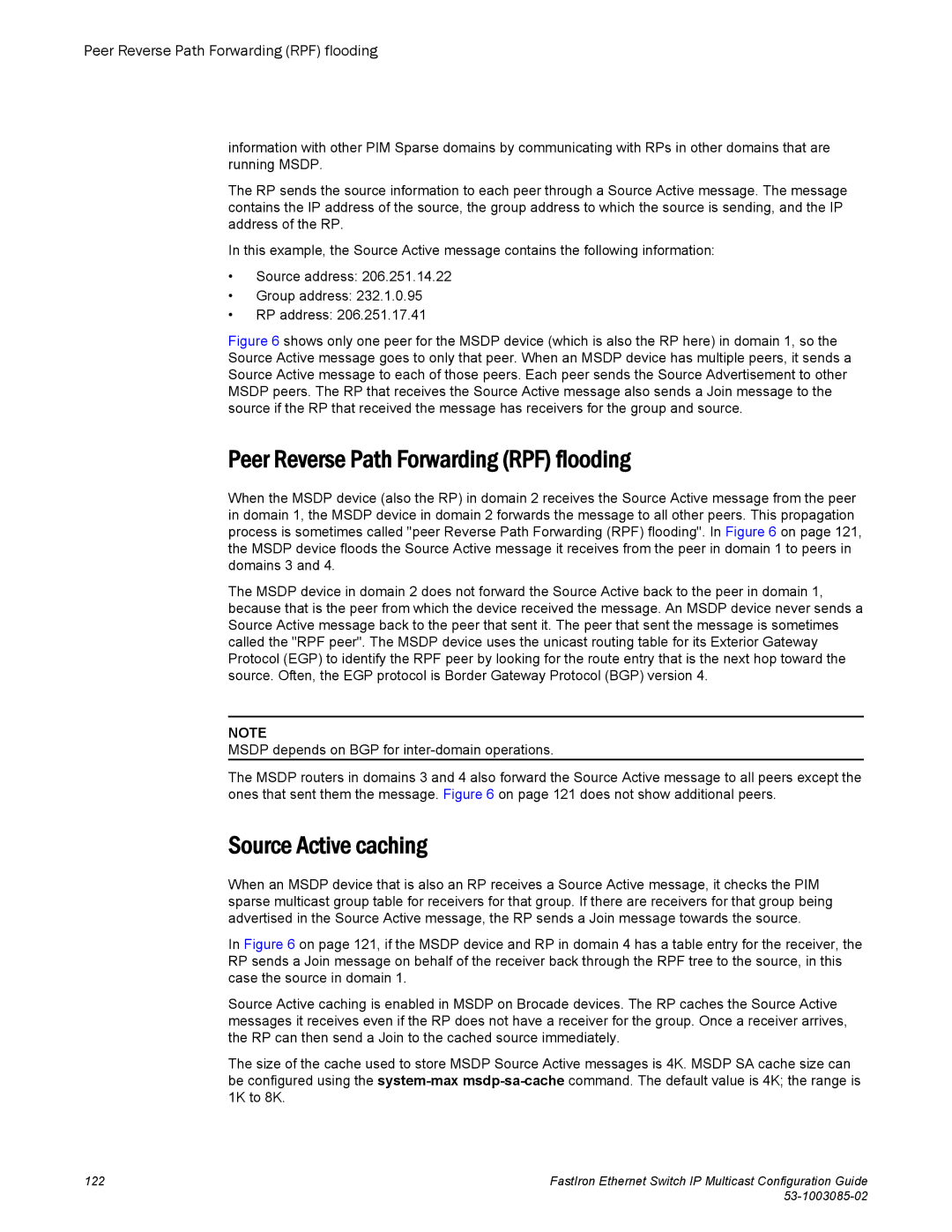Peer Reverse Path Forwarding (RPF) flooding
information with other PIM Sparse domains by communicating with RPs in other domains that are running MSDP.
The RP sends the source information to each peer through a Source Active message. The message contains the IP address of the source, the group address to which the source is sending, and the IP address of the RP.
In this example, the Source Active message contains the following information:
•Source address: 206.251.14.22
•Group address: 232.1.0.95
•RP address: 206.251.17.41
Figure 6 shows only one peer for the MSDP device (which is also the RP here) in domain 1, so the Source Active message goes to only that peer. When an MSDP device has multiple peers, it sends a Source Active message to each of those peers. Each peer sends the Source Advertisement to other MSDP peers. The RP that receives the Source Active message also sends a Join message to the source if the RP that received the message has receivers for the group and source.
Peer Reverse Path Forwarding (RPF) flooding
When the MSDP device (also the RP) in domain 2 receives the Source Active message from the peer in domain 1, the MSDP device in domain 2 forwards the message to all other peers. This propagation process is sometimes called "peer Reverse Path Forwarding (RPF) flooding". In Figure 6 on page 121, the MSDP device floods the Source Active message it receives from the peer in domain 1 to peers in domains 3 and 4.
The MSDP device in domain 2 does not forward the Source Active back to the peer in domain 1, because that is the peer from which the device received the message. An MSDP device never sends a Source Active message back to the peer that sent it. The peer that sent the message is sometimes called the "RPF peer". The MSDP device uses the unicast routing table for its Exterior Gateway Protocol (EGP) to identify the RPF peer by looking for the route entry that is the next hop toward the source. Often, the EGP protocol is Border Gateway Protocol (BGP) version 4.
NOTE
MSDP depends on BGP for
The MSDP routers in domains 3 and 4 also forward the Source Active message to all peers except the ones that sent them the message. Figure 6 on page 121 does not show additional peers.
Source Active caching
When an MSDP device that is also an RP receives a Source Active message, it checks the PIM sparse multicast group table for receivers for that group. If there are receivers for that group being advertised in the Source Active message, the RP sends a Join message towards the source.
In Figure 6 on page 121, if the MSDP device and RP in domain 4 has a table entry for the receiver, the RP sends a Join message on behalf of the receiver back through the RPF tree to the source, in this case the source in domain 1.
Source Active caching is enabled in MSDP on Brocade devices. The RP caches the Source Active messages it receives even if the RP does not have a receiver for the group. Once a receiver arrives, the RP can then send a Join to the cached source immediately.
The size of the cache used to store MSDP Source Active messages is 4K. MSDP SA cache size can be configured using the
122 | FastIron Ethernet Switch IP Multicast Configuration Guide |
|
